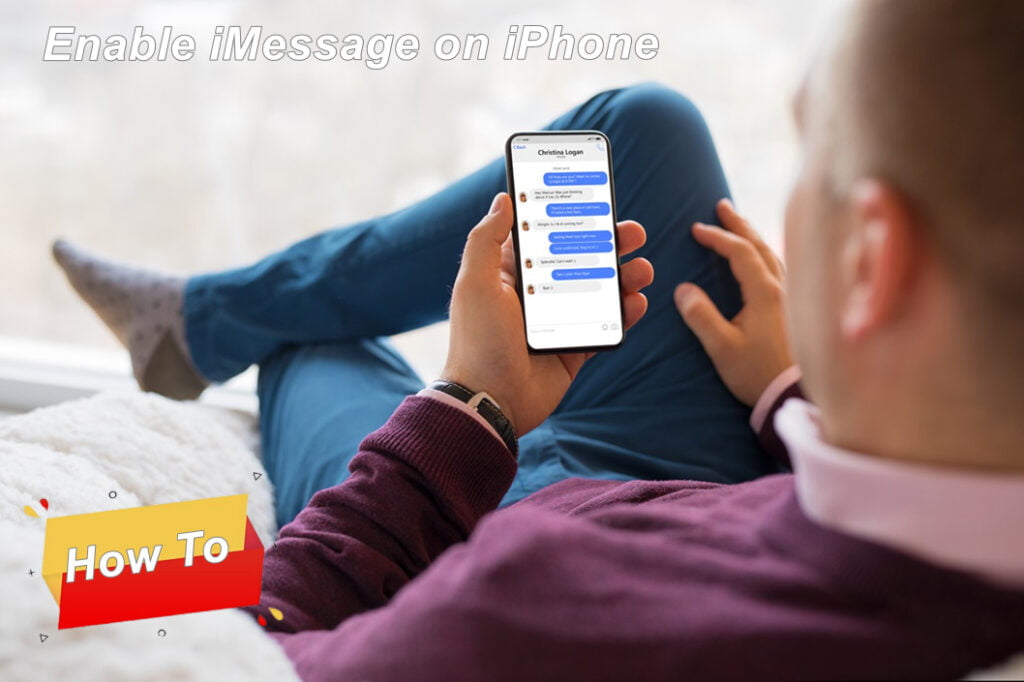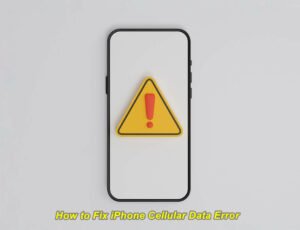Ever wondered how iMessage could transform your communication on your iPhone? Enhancing your messaging by exploring the settings of iMessage on your Apple device opens up a realm of interactive and engaging texting experiences. In this comprehensive guide, you’ll learn everything you need to know about enabling iMessage, from the basic setup to personalizing your messages with fun effects.
We’ll walk you through the step-by-step process of activating iMessage on your iPhone, delve into the enhanced media sharing features, and unveil the security benefits of using iMessage. Don’t miss out on these game-changing insights. Read on to discover how iMessage can revolutionize your texting and media sharing experience.
Step-by-step guide to activate iMessage on iPhone

To enable iMessage on your iPhone, simply follow these steps and enter your name when prompted.
Open the Settings app on your iPhone
- Locate and tap on the “Settings” app icon on your iPhone’s home screen to access the name settings.
- The Settings app typically has a gray gear-shaped icon. This icon represents the name of the app.
Tap on “Messages” and toggle the switch next to “iMessage” to enable it
- Once you’re in the Settings app, scroll down until you find the option labeled “Messages.” If you are experiencing any issues, such as being signed out of iMessage, this is where you can resolve them.
- Tap on it to access the Messages settings.
- In the Messages settings, you’ll see a switch next to “iMessage.”
- Toggle this switch to turn iMessage ON (the switch will turn green when enabled).
Follow the prompts to verify your phone number and Apple ID for activation
- After enabling iMessage, you may be prompted to verify your phone number or Apple ID.
- If asked for verification, simply follow the prompts provided by your iPhone.
- You might receive a confirmation code via SMS or email that you need to enter into your device for verification purposes.
- This step ensures that only authorized users can activate iMessage with their respective phone numbers or Apple IDs.
That’s it! By following these steps, you should now have successfully enabled iMessage on your iPhone.
Enabling iMessage allows you to send text messages, photos, videos, and more using an internet connection rather than relying solely on traditional cellular networks. It also offers additional features like read receipts and typing indicators.
Here are some key benefits of using iMessage:
- Free messaging: With iMessage, you can send unlimited messages without incurring any additional charges from your cellular carrier as long as you have an active internet connection.
- Enhanced media sharing: iMessage supports sending high-quality photos and videos without compressing them excessively, ensuring your media looks great when shared with friends and family.
- Group chats: iMessage lets you create group chats, making it easy to stay connected with multiple people at once. You can have lively conversations, share photos, and even react to messages within a group.
- Seamless integration: iMessage seamlessly integrates with other Apple devices like Macs, iPads, and Apple Watches. This means you can start a conversation on your iPhone and continue it on another Apple device without missing a beat.
It’s important to note that iMessage requires an active internet connection for sending and receiving messages. If you’re in an area with poor or no internet connectivity, regular SMS (text messaging) will be used instead.
Now that you know how to enable iMessage on your iPhone, go ahead and enjoy the benefits of this convenient messaging platform!
Benefits of using iMessage and its security features
iMessage is a popular messaging service exclusive to Apple devices, offering a range of benefits and security features that enhance communication. Let’s explore some of the advantages of using iMessage and how it ensures secure messaging.
End-to-End Encryption for Secure Messaging
One of the standout features of iMessage is its end-to-end encryption, which means that only the sender and recipient can access the content of their messages. This encryption ensures that no one else, including Apple or third parties, can intercept or read your conversations. It provides an added layer of privacy and security, giving users peace of mind when sharing sensitive information.
High-Quality Media Sharing without Compression
Unlike other messaging platforms that compress media files to reduce their size, iMessage allows users to send high-quality photos, videos, and documents without any loss in quality. This means you can share stunning pictures with vibrant colors or videos with crisp details without worrying about them being compressed or degraded during transmission. It’s perfect for sharing memorable moments with friends and family.
Enhanced Communication with Additional Features
iMessage goes beyond simple text messaging by offering various features that enhance communication. For example:
- Read Receipts: You can see when your message has been read by the recipient, eliminating any uncertainty about whether they have seen it.
- Typing Indicators: These indicators let you know when someone is typing a response to your message, so you can anticipate their reply.
- Message Effects: With iMessage, you can add fun effects like confetti or balloons to your messages to make them more engaging and expressive.
These additional features make conversations more dynamic and interactive, bringing a touch of excitement to your chats.
IMessage seamlessly integrates with your Apple ID email address. This means that if someone sends you an email on your Apple ID email address associated with iMessage, you can view and respond to it directly within the iMessage app. iMessage is a convenient way to manage your messages, emails, and what is iMessage in one place.
How to enable iMessage on Mac devices
To enable iMessage on your Mac device, follow these simple steps:
Open the Messages app on your Mac device
Locate and open the Messages app on your Mac. It’s usually found in the Applications folder or you can use Spotlight search to find it quickly.
Go to Preferences > Accounts and sign in with your Apple ID
Once you have the Messages app open, click on “Preferences” in the top menu bar. A new window will appear, and from there, select “Accounts.” You may be prompted to sign in with your Apple ID. If you don’t have one, you can create a new Apple ID by clicking on “Create Apple ID” and following the instructions.
Check the box next to “Enable this account” for iMessage activation
In the Accounts section of Preferences, you’ll see a list of accounts associated with different messaging services. Look for your Apple ID account and make sure the box next to “Enable this account” is checked. This will activate iMessage for your Mac device.
Enabling iMessage allows you to send and receive messages seamlessly across all your Apple devices, including iPhones, iPads, and Macs. It syncs all conversations so that you can continue chatting from where you left off on any device.
iMessage offers several benefits that make it a popular choice among users:
- Free messaging: With iMessage, you can send unlimited text messages without worrying about SMS charges.
- Rich features: iMessage supports various multimedia features like photos, videos, GIFs, stickers, and even Animojis.
- End-to-end encryption: Your iMessages are encrypted between sender and receiver, ensuring secure communication.
- Seamless integration: iMessage is tightly integrated into iOS and macOS systems, making it easy to use across all Apple devices.
- Read receipts: You can see when your message has been delivered and read by the recipient, providing more transparency in communication.
However, it’s important to note that iMessage requires an active internet connection, either through Wi-Fi or cellular data. Without internet access, you won’t be able to send or receive iMessages.
Setting up iMessage on different Apple devices
To enable iMessage on your various Apple devices, follow these simple steps:
iPad or iPod touch
- Open the Settings app on your iPad or iPod touch.
- Scroll down and tap on “Messages.”
- Toggle the switch next to “iMessage” to turn it on.
Enabling iMessage on your iPad or iPod touch allows you to send and receive messages using your Apple ID. It’s a great way to stay connected with friends and family!
Apple Watch
- On your paired iPhone, open the Watch app.
- Scroll down and tap on “Notifications.”
- Select “Messages” under the “My Watch” tab.
- Toggle the switch next to “Show Notifications” to enable message notifications on your Apple Watch.
By enabling iMessage notifications on your Apple Watch, you can conveniently view and respond to messages right from your wrist! It’s like having a mini messenger right at hand.
Setting up iMessage across different Apple devices ensures that you can seamlessly communicate with others regardless of which gadget you’re using at the moment.
Remember, all these devices are linked through your Apple ID, so once you set up iMessage on one device, it automatically syncs with the others.
Here are some key benefits of enabling iMessage across multiple devices:
- Convenience: With iMessage enabled, you can effortlessly switch between devices without missing any important messages.
- Synced Conversations: All your conversations will be synced across all devices, allowing you to pick up where you left off no matter which device you’re using.
- Seamless Integration: By setting up iMessage across different devices, you create a cohesive ecosystem that enhances communication and streamlines messaging.
While there are many advantages to using iMessage across multiple devices, it’s essential to keep in mind a few considerations:
- Compatibility: Ensure that all your devices are compatible with iMessage. Some older models may not support this feature.
- Data Usage: Keep an eye on your data usage, especially if you’re sending or receiving large files or media through iMessage.
- Privacy Settings: Familiarize yourself with the privacy settings within iMessage to control who can contact you and see when you’ve read their messages.
By following these steps and considering these factors, you’ll be able to set up iMessage on your Apple devices seamlessly. Stay connected, stay in touch!
Using eSIM for iMessage and ordering process
To enable iMessage services without a physical SIM card, you can utilize an eSIM. This technology allows you to use cellular plans and access iMessage services seamlessly. Let’s delve into how you can enable iMessage using eSIM and the process of ordering it.
eSIM Enables Seamless iMessage Access
eSIM is a game-changer. It eliminates the need for a physical SIM card, making it easier to connect to cellular networks and enjoy all the features of iMessage. With an eSIM, you can effortlessly send messages, photos, videos, and even make FaceTime calls using iMessage. What is iMessage makes it easy to stay connected and communicate with others.
Ordering an eSIM Plan
Ordering an eSIM plan compatible with your device is a straightforward process. You have two options: contacting your carrier or visiting their website for instructions. Here’s how you can go about it:
- Contact Your Carrier: Reach out to your mobile carrier through their customer service hotline or visit one of their stores in person. Inform them that you want to order an eSIM plan for your device.
- Visit Their Website: Alternatively, navigate to your carrier’s website and look for the section related to eSIM plans. They usually provide step-by-step instructions on how to order an eSIM plan online.
Once you’ve chosen either option, follow the designated steps provided by your carrier or on their website.
Benefits of Using eSIM for iMessage
Using an eSIM for iMessage offers several advantages:
- Convenience: With no physical SIM card required, managing cellular plans becomes hassle-free.
- Flexibility: Switching between different carriers or plans is more convenient with an eSIM.
- Dual SIM Functionality: Some devices support dual SIM functionality with both a physical SIM card and an embedded eSIM, allowing you to use multiple numbers simultaneously.
- Travel-Friendly: When traveling internationally, you can easily switch to a local carrier’s eSIM plan without the need for physical SIM card swapping.
Considerations When Using eSIM
While eSIM technology offers numerous benefits, there are a few things to consider:
- Device Compatibility: Ensure that your device supports eSIM functionality before attempting to order an eSIM plan.
- Carrier Support: Not all carriers offer eSIM plans, so check with your carrier beforehand.
- Activation Process: The activation process for an eSIM plan may differ from traditional SIM card activation. Follow the instructions provided by your carrier carefully.
By considering these factors and following the necessary steps, you can enjoy the convenience and flexibility of using iMessage services with an eSIM.
Troubleshooting: Checking if iMessage is enabled on your iPhone
To ensure that iMessage is enabled on your iPhone, follow these simple steps:
Open the Settings app on your iPhone.
- Locate the “Settings” app icon on your home screen. It looks like a gear.
- Tap on it to open the settings menu.
Tap “Messages” and ensure that the switch next to “iMessage” is toggled ON (green).
- Scroll down until you find the option labeled “Messages.” It has a green speech bubble icon. If you are experiencing issues with iMessage waiting for activation or being signed out of iMessage, this is where you can access the necessary settings.
- Tap on it to access the Messages settings.
If not enabled, toggle it on and follow the prompts for activation.
- Once in the Messages settings, look for the switch next to “iMessage.”
- If it’s already toggled ON (green), then iMessage is already enabled on your device.
- However, if it’s toggled OFF (gray), simply tap on the switch to turn it ON.
- You may be prompted to enter your Apple ID and password. Follow the instructions provided and enter this information when requested.
- After entering your Apple ID credentials, wait for a moment as iMessage activates. This process may take a few seconds or longer depending on your internet connection.
Enabling iMessage allows you to send messages, photos, videos, and more using Apple’s messaging service instead of traditional SMS or MMS. It offers additional features like read receipts, typing indicators, and end-to-end encryption for enhanced privacy.
By checking if iMessage is enabled through these troubleshooting steps, you can ensure that you’re able to fully utilize this convenient messaging service with all its features. It’s always a good idea to double-check if any issues arise with sending or receiving messages through iMessage.
Remember that enabling iMessage requires an active internet connection either through Wi-Fi or cellular data. So make sure you have a stable internet connection before attempting to enable iMessage on your iPhone.
Successfully enabling iMessage for seamless messaging experience
Congratulations! You are now equipped with the knowledge to enable iMessage on your Apple devices, ensuring a seamless messaging experience. By following the step-by-step guide provided, you can activate iMessage on your iPhone and Mac devices effortlessly. Not only does this enable you to send messages using your phone number or email address, but it also offers enhanced security features that protect your conversations.
Now that you have unlocked the power of iMessage, take advantage of its numerous benefits. Enjoy end-to-end encryption that keeps your messages private and secure. Seamlessly switch between different Apple devices without missing a beat in your conversations. Plus, with eSIM capabilities, you can even use iMessage without needing a physical SIM card.
So what are you waiting for? Dive into the world of iMessage and elevate your messaging game like never before!
FAQs
How do I know if my iPhone has iMessage enabled?
To check if iMessage is enabled on your iPhone, go to Settings > Messages and ensure that the toggle for “iMessage” is switched on. If it’s already enabled, you’ll see a green indicator next to it.
Can I use iMessage on non-Apple devices?
No, iMessage is exclusive to Apple devices such as iPhones, iPads, and Macs. However, you can still communicate with non-Apple users through regular SMS or other messaging apps.
Does enabling iMessage consume data or incur additional charges?
Enabling and using iMessage over Wi-Fi does not consume cellular data or incur additional charges. However, when using iMessage over cellular data (without Wi-Fi), standard data rates may apply depending on your mobile carrier plan.
Can I use multiple email addresses with one iMessage account?
Yes! You can associate multiple email addresses with your iMessage account by going to Settings > Messages > Send & Receive and adding additional email addresses under the “You can be reached by iMessage at” section.
What should I do if my iMessage is not working after enabling it?
If you encounter issues with iMessage after enabling it, try restarting your device and ensuring that you have a stable internet connection. If the problem persists, you can refer to our troubleshooting section or contact Apple Support for further assistance.





